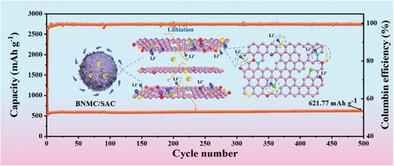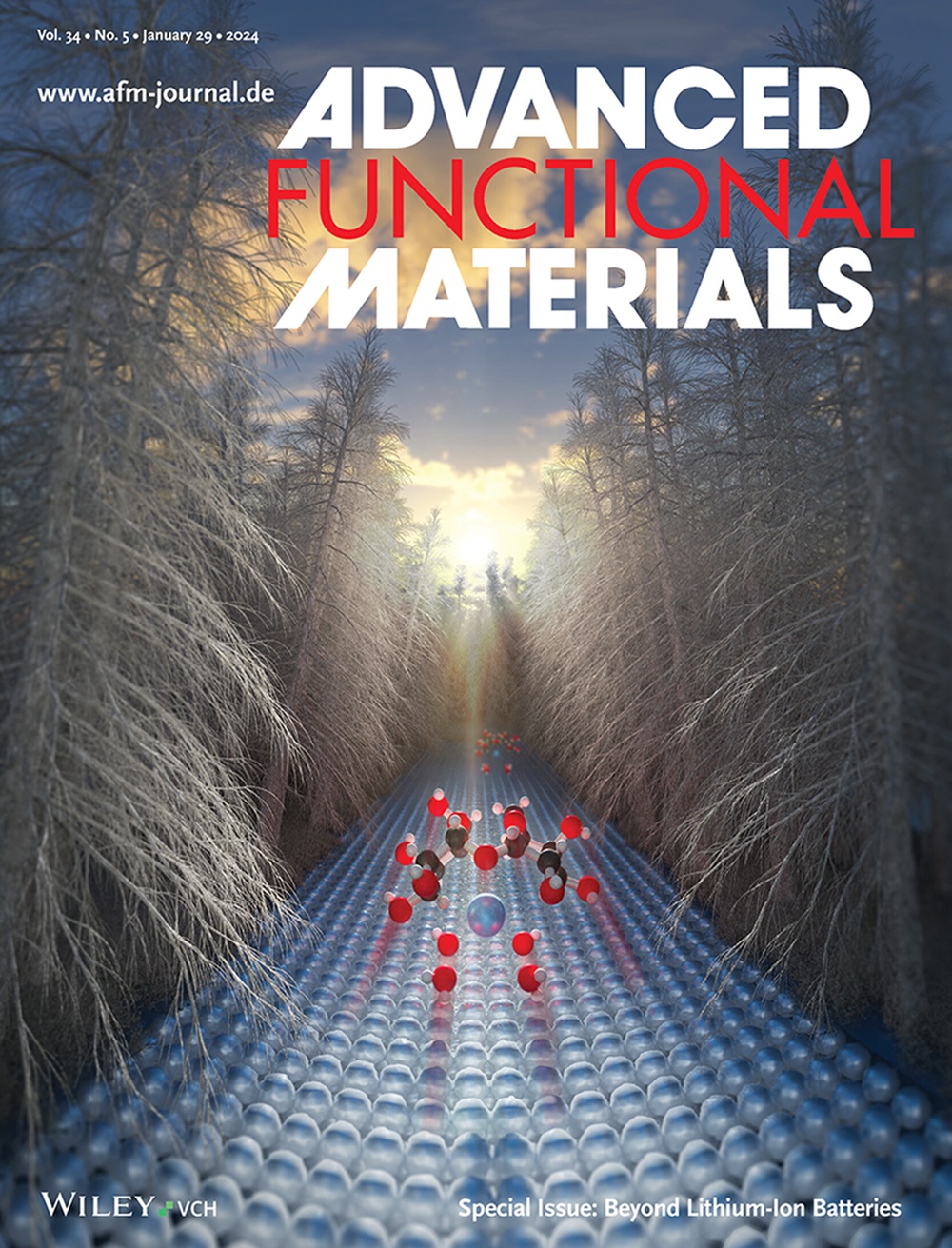Bacteria‐Derived Carbon Composite Anode for Highly Durable Lithium‐Ion Storage Enabled by Heteroatom Doping and Pore Construction
IF 18.5
1区 材料科学
Q1 CHEMISTRY, MULTIDISCIPLINARY
引用次数: 0
Abstract
Bacteria‐derived carbon anode materials have shown appealing potential for advanced energy storage applications due to their low cost and good sustainability. However, the few intrinsic defects, sluggish transmission dynamics, and low capacity become the main bottleneck for their further development. Herein, the study designs a highly B, N co‐doped mesoporous carbon (BNMC)/staphylococcus aureus‐derived carbon (SAC) composite via a facile assembly route, followed by boron‐doping. Enabled by heteroatom doping and pore construction, the resulting BNMC/SAC anode for lithium‐ion batteries demonstrates a high reversible capacity of 621.77 mAh g

求助全文
约1分钟内获得全文
求助全文
来源期刊

Advanced Functional Materials
工程技术-材料科学:综合
CiteScore
29.50
自引率
4.20%
发文量
2086
审稿时长
2.1 months
期刊介绍:
Firmly established as a top-tier materials science journal, Advanced Functional Materials reports breakthrough research in all aspects of materials science, including nanotechnology, chemistry, physics, and biology every week.
Advanced Functional Materials is known for its rapid and fair peer review, quality content, and high impact, making it the first choice of the international materials science community.
 求助内容:
求助内容: 应助结果提醒方式:
应助结果提醒方式:


